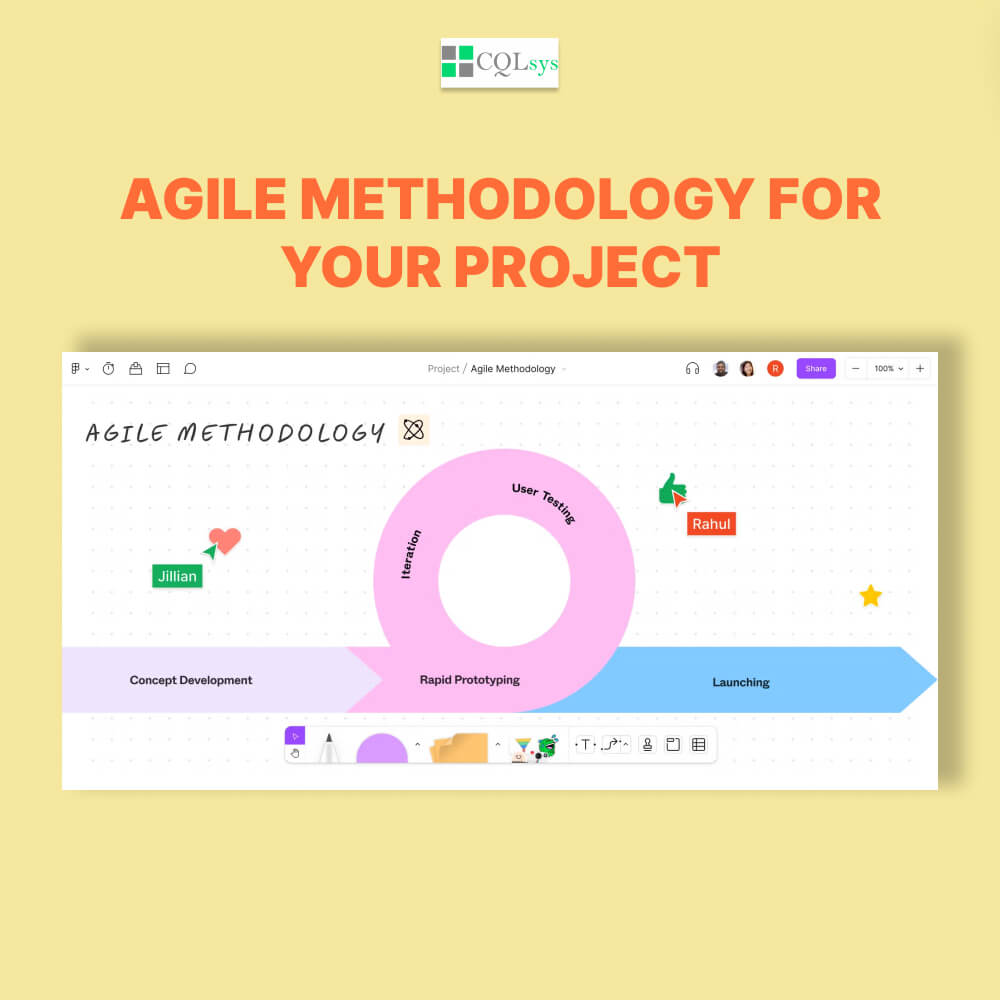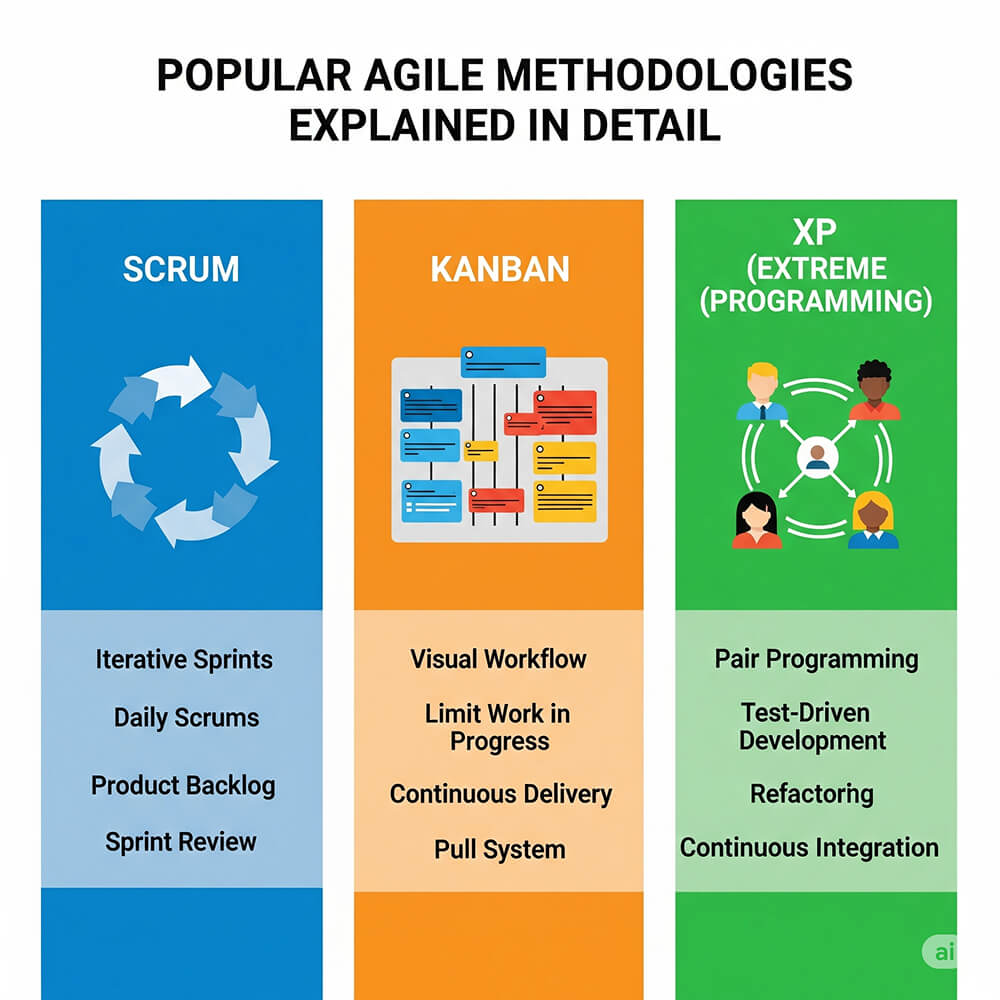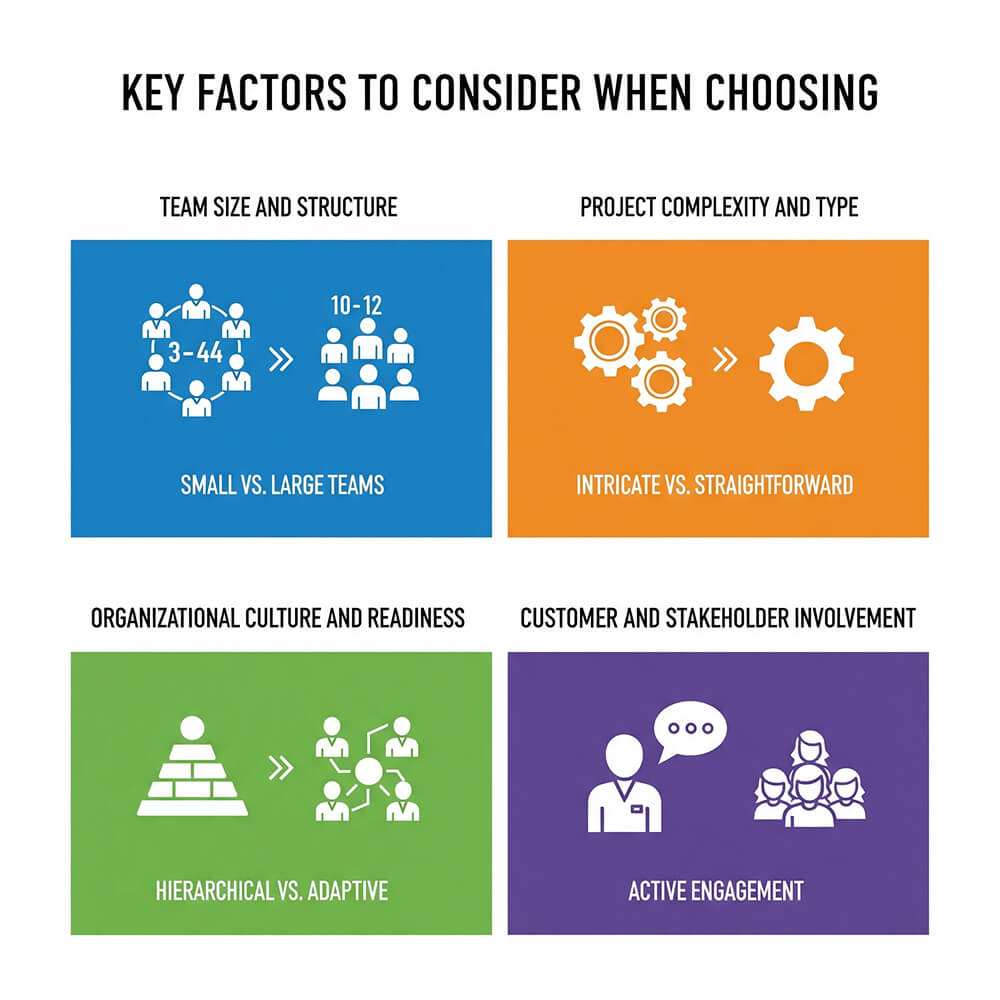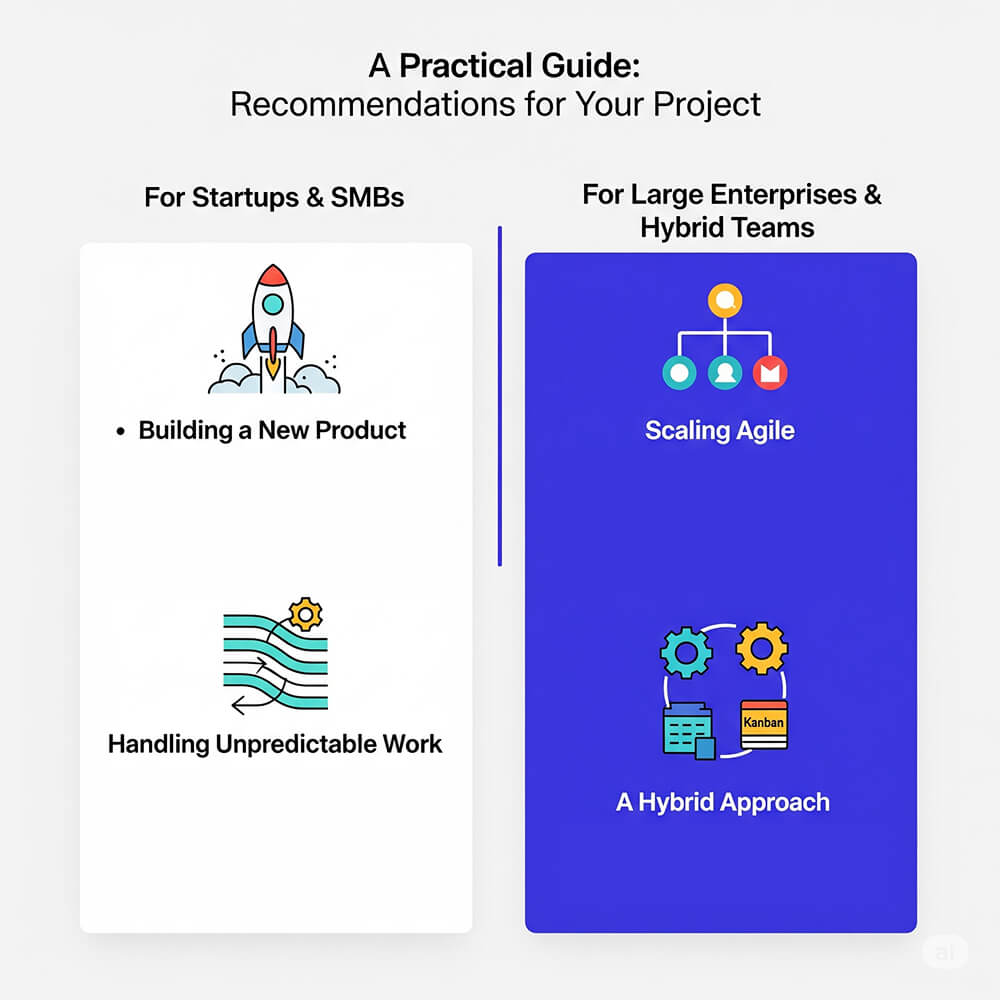How to Choose the Right Agile Methodology for Your Project: Expert Guide for Startups & Enterprises

In the modern business landscape, the ability to adapt, innovate, and deliver value at speed is the ultimate competitive advantage. Gone are the days of rigid, multi-year plans and waterfall project management. Agile methodologies have emerged as the standard for agile project management, helping teams across industries—from software to marketing—navigate complexity and respond to change with confidence.
Yet, a new challenge has arisen from this shift: a sea of Agile frameworks. For agile project managers, startup founders, and enterprise leaders, the question isn't whether to be Agile, but how to choose the right Agile methodology for their specific needs. This choice is a critical step in any successful agile transformation.
This comprehensive guide is designed to cut through the confusion and provide you with a practical, actionable framework for Agile methodology selection. We will demystify the most popular frameworks, provide a detailed comparison, and offer expert advice tailored to your project, team, and organizational context. By the end, you'll have the knowledge to select the best agile methodology for projects of any size or complexity, understanding the significant agile benefits each one offers.
Understanding Agile’s Core Principles: The Unifying Philosophy
Before diving into the mechanics of each framework, it’s crucial to understand the foundational philosophy that unites them all. The Agile Manifesto established four core values that serve as the bedrock of every Agile methodology. These are the agile manifesto principles and agile principles and values that define the Agile mindset:
- Individuals and interactions over processes and tools.
- Working software over comprehensive documentation.
- Customer collaboration over contract negotiation.
- Responding to change over following a plan.
These principles are not optional; they are the essence of what it means to be Agile. Every agile process flow you consider, from Scrum to Kanban, is a unique implementation of these values. They emphasize people, outcomes, and flexibility over rigid plans and bureaucratic procedures, which is why they are so effective in today’s volatile markets.
Popular Agile Methodologies Explained in Detail

1. Scrum: The Framework for Complex Product Development
Scrum is the most widely adopted and well-known scrum framework. It's an iterative and incremental approach that provides a clear, lightweight structure for teams tackling complex, adaptive problems. It's often the first methodology that comes to mind when considering agile methodologies for product development.
Key Roles:
- Product Owner: The voice of the customer. Responsible for defining the product vision, creating and prioritizing the Product Backlog, and ensuring the team builds the right product.
- Scrum Master: A servant-leader who facilitates the Scrum process, ensures the team adheres to Scrum principles, and removes impediments that slow the team down.
- Development Team: A self-organizing, cross-functional group responsible for delivering a "Done" increment of the product each sprint.
The Sprint Cycle:
The heart of Scrum is the sprint, a time-boxed period of 1-4 weeks. A sprint begins with Sprint Planning, where the team commits to a set of items from the Product Backlog and creates a Sprint Backlog. The team holds a Daily Scrum (15-minute stand-up) each day to synchronize. At the end of the sprint, the team holds a Sprint Review to demonstrate the completed work to stakeholders and a Sprint Retrospective to inspect and adapt its process.
Ideal Use Case: Scrum is a phenomenal choice for small teams (typically 3-9 people) working on new software development, web applications, or any product with high levels of ambiguity and change. It provides the structure needed to deliver a working product in regular, predictable intervals.
2. Kanban: The Framework for Continuous Flow and Efficiency
Unlike Scrum's time-boxed sprints, Kanban is a continuous flow system based on Lean principles. Its focus is on optimizing a smooth workflow.
Key Principles:
- Visualize the Workflow: All work items are represented as cards on a Kanban board from "To Do" to "Done".
- Limit Work in Progress (WIP): Set a hard limit on items in progress to prevent multitasking and identify bottlenecks.
- Manage Flow: Aim for smooth, predictable delivery. Metrics like Lead Time and Cycle Time are used to improve the process.
Ideal Use Case: Kanban is ideal for teams with high volumes of unpredictable work, such as IT support, DevOps, maintenance, and marketing. It efficiently manages a continuous stream of incoming requests.
3. Extreme Programming (XP): For Uncompromising Code Quality
XP is a highly disciplined Agile framework designed for software development. Its engineering practices aim to produce the highest quality code while remaining responsive to customer needs.
Key Practices:
- Pair Programming: Two developers work together at a single machine to reduce bugs and share knowledge.
- Test-Driven Development (TDD): Write tests before code to ensure reliability.
- Continuous Integration & Delivery (CI/CD): Integrate and test code frequently, deploying features as soon as they’re ready.
Ideal Use Case: XP suits small, co-located teams building complex, mission-critical software where zero bugs are tolerated.
4. Lean Software Development: The Philosophy of Maximizing Value
Lean focuses on optimizing the value stream by eliminating waste and maximizing customer value.
Seven Core Principles:
- Eliminate Waste: Remove non-value items like extra code or delays.
- Amplify Learning: Create fast feedback loops to validate and learn.
- Decide as Late as Possible: Delay final decisions to stay flexible.
- Deliver as Fast as Possible: Focus on a quick flow of value.
- Empower the Team: Give autonomy to those doing the work.
- Build Integrity In: Ensure high-quality products that meet requirements.
- See the Whole: Understand the system, not just individual parts.
Ideal Use Case: Lean is suitable for organizations seeking efficiency and continuous improvement, across many industries.
5. Scrumban: The Best of Both Worlds
Scrumban combines Scrum and Kanban principles. Teams visualize work on a Kanban board while using Scrum-like ceremonies such as stand-ups and retrospectives. It allows adaptability based on team needs.
Ideal Use Case: Scrumban is great for teams transitioning between Scrum and Kanban, or managing mixed tasks of new development and maintenance.
Key Factors to Consider When Choosing

Team Size and Structure
Scrum works best for small, dedicated, cross-functional teams (3-9 people). Kanban is more flexible and can suit any team size, including those handling multiple projects.
Project Complexity and Type
Complex, new product builds favor Scrum. Continuous maintenance or support fits Kanban better.
Organizational Culture and Readiness
Scrum requires self-organization and transparency, which may challenge traditional hierarchies. Kanban is easier to adopt gradually.
Customer and Stakeholder Involvement
Scrum includes formal ceremonies for feedback, XP may involve an on-site customer, and Kanban allows continuous input.
A Practical Guide: Recommendations for Your Project

For Startups & SMBs
Building a New Product: Scrum is ideal for startups creating new applications or products. Its regular rhythm, clear roles, and working increments accelerate time to market.
Handling Unpredictable Work: Kanban is perfect for IT support or marketing teams managing continuous requests.
